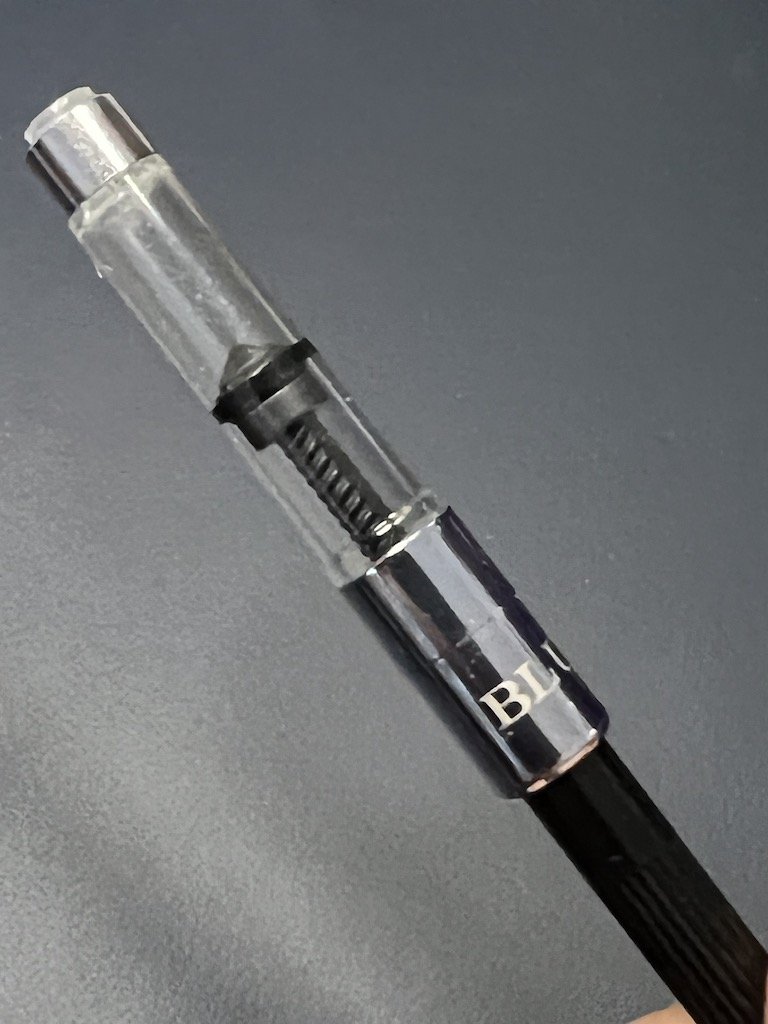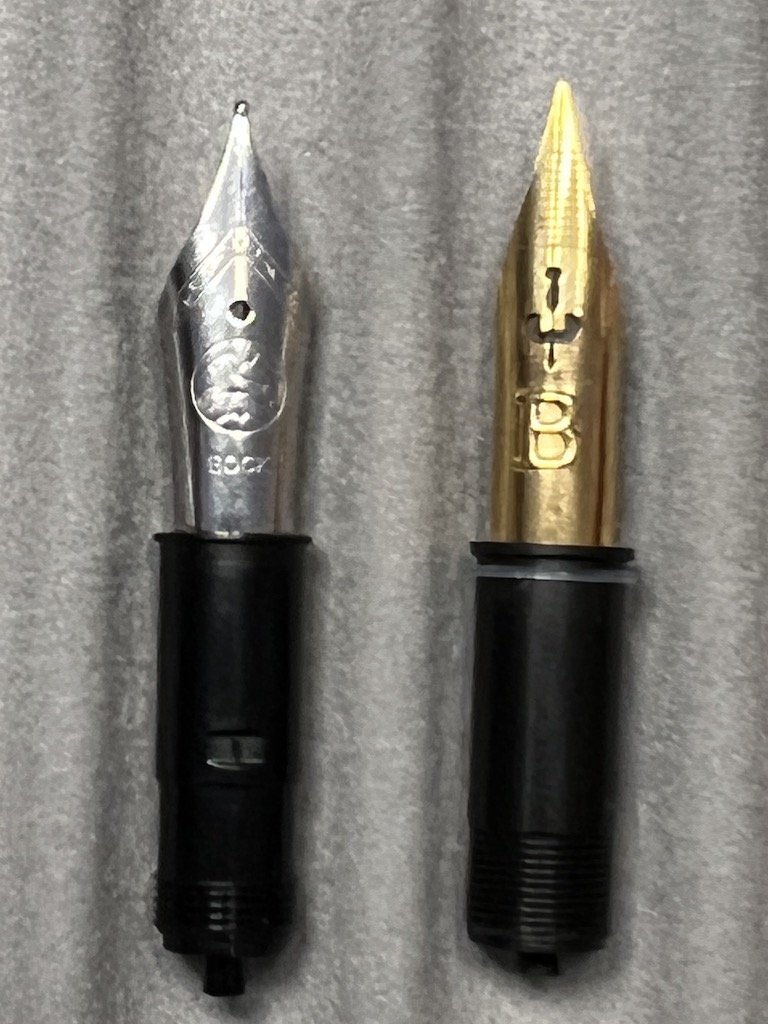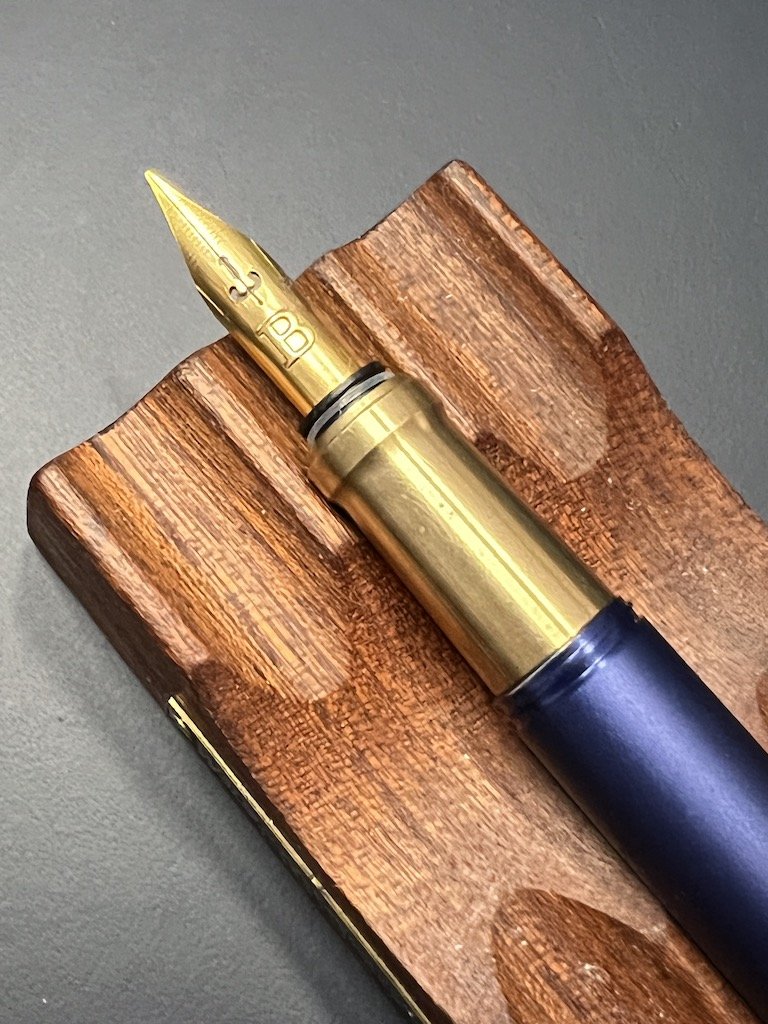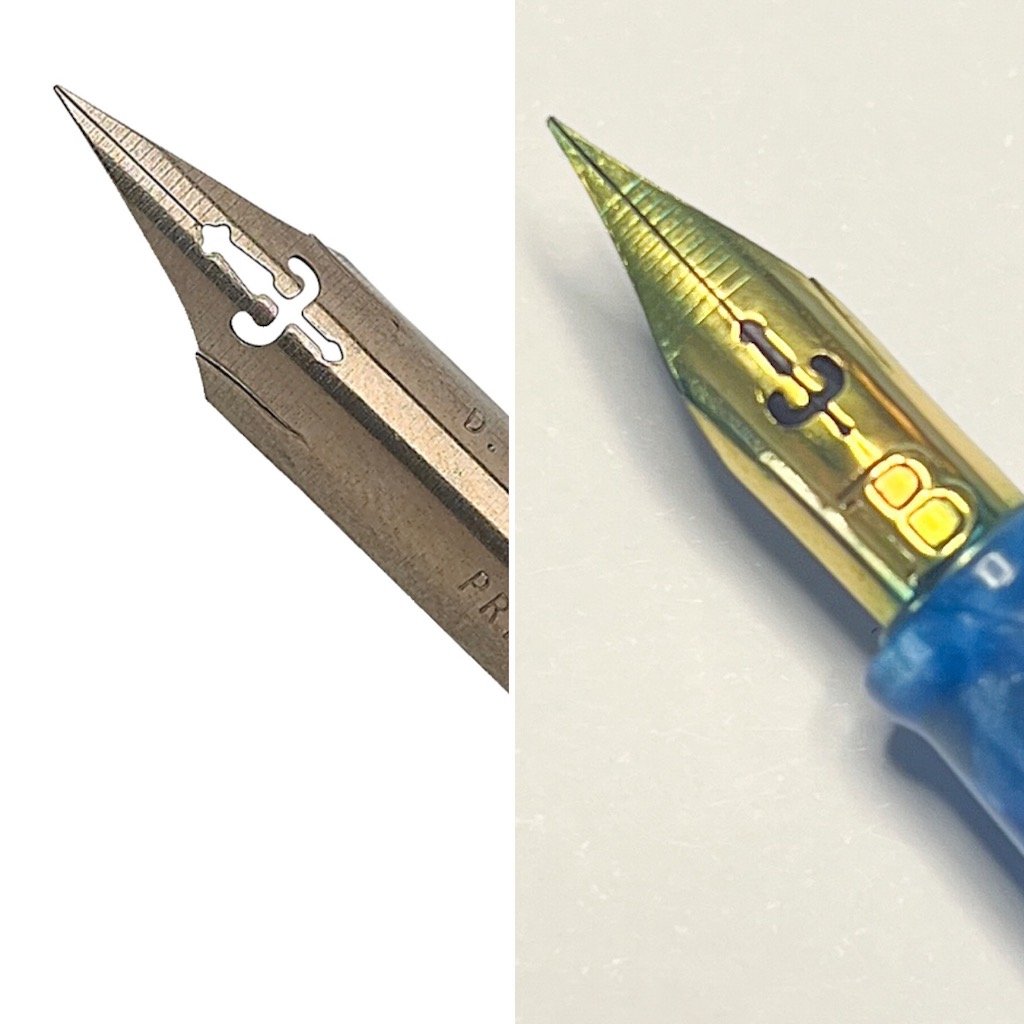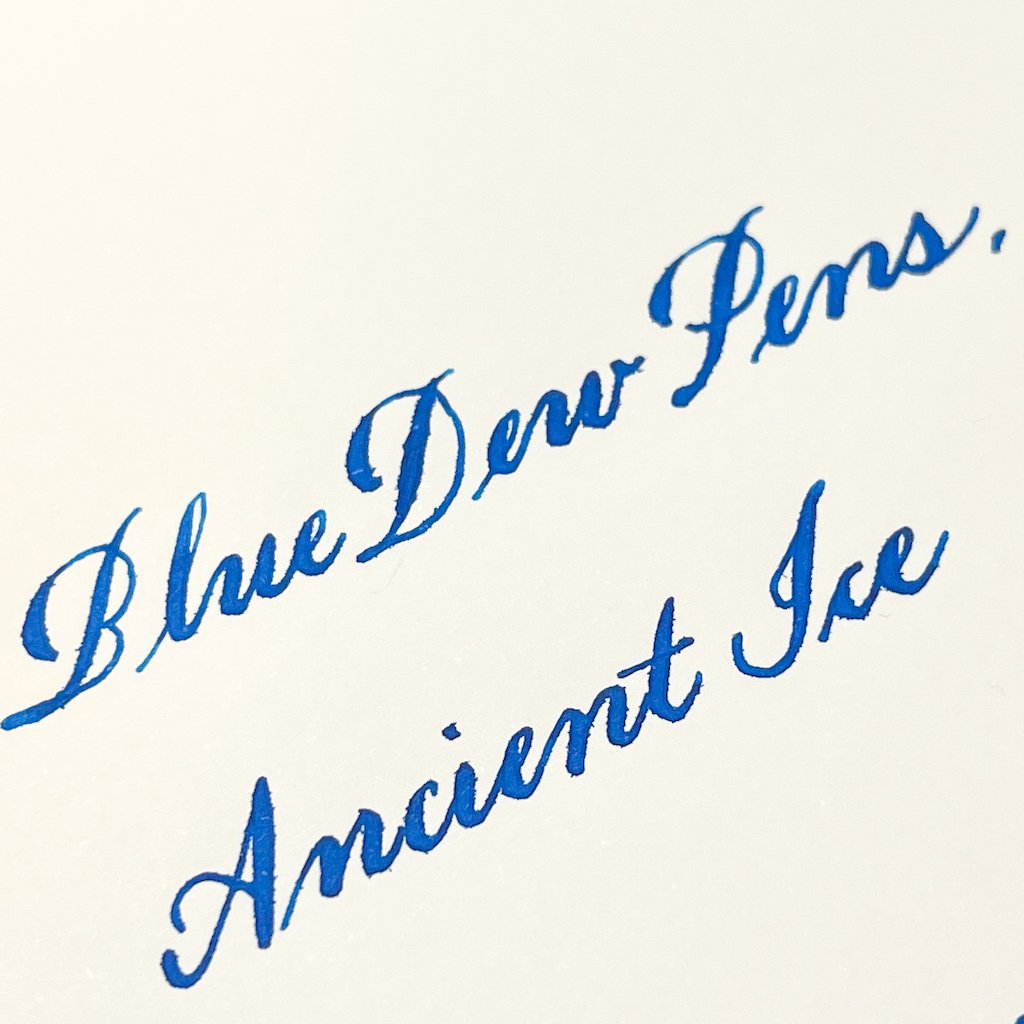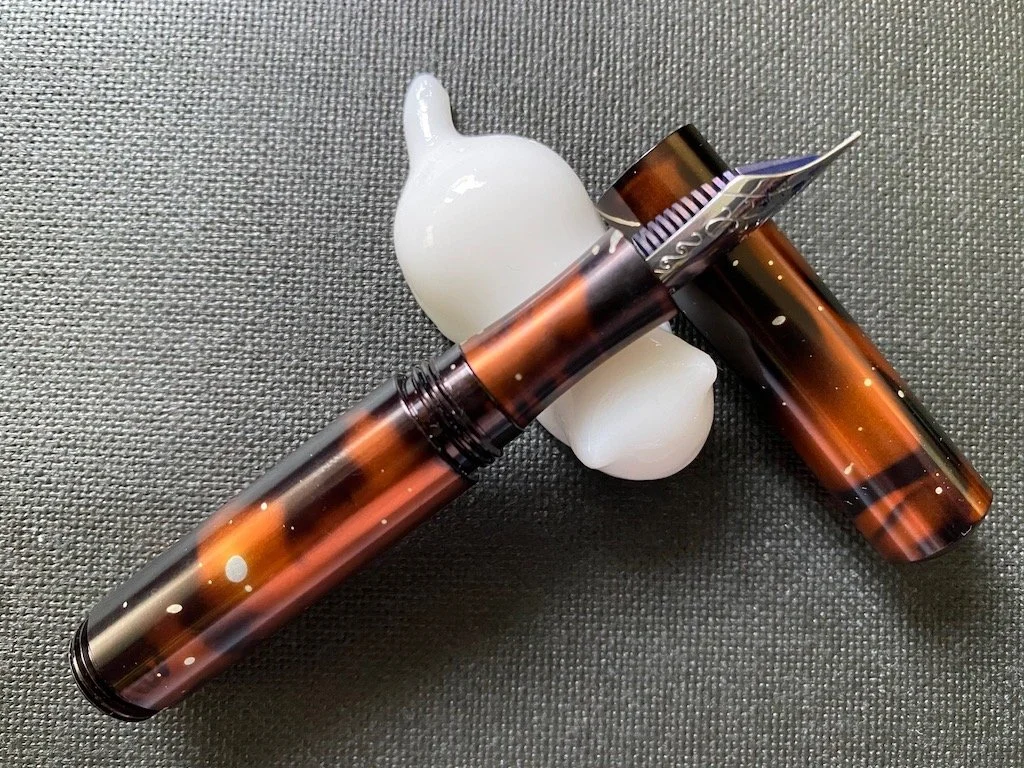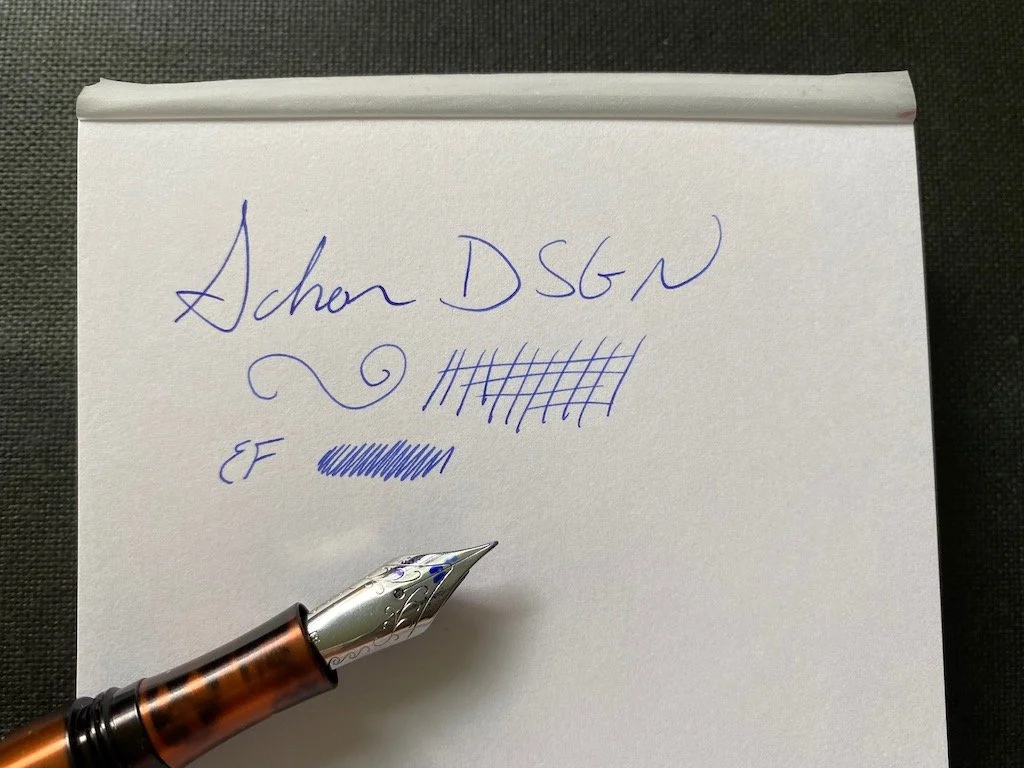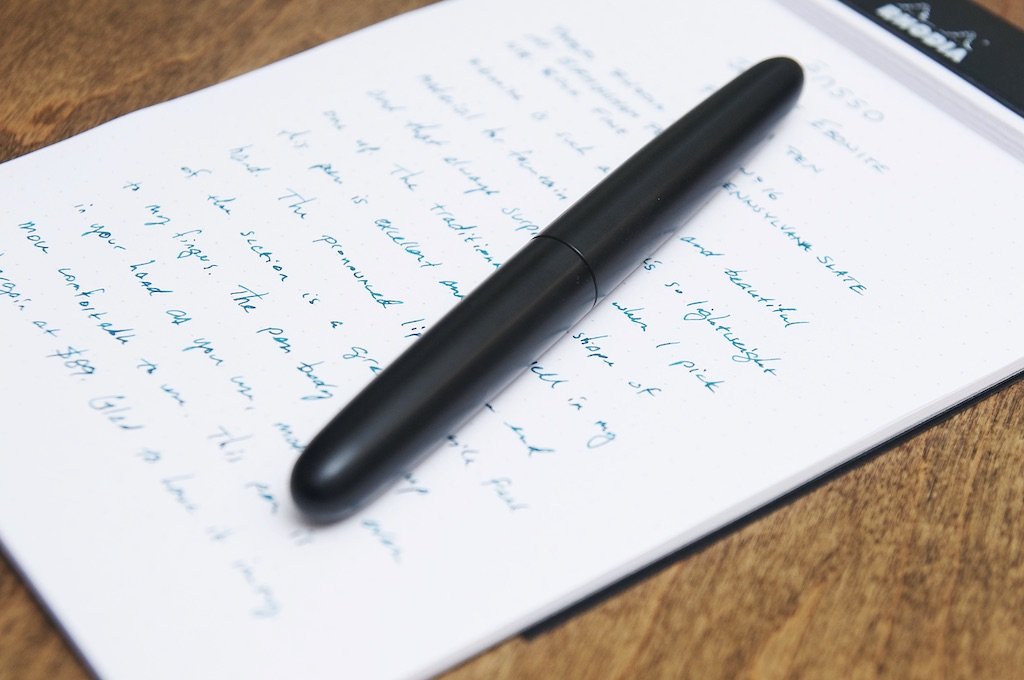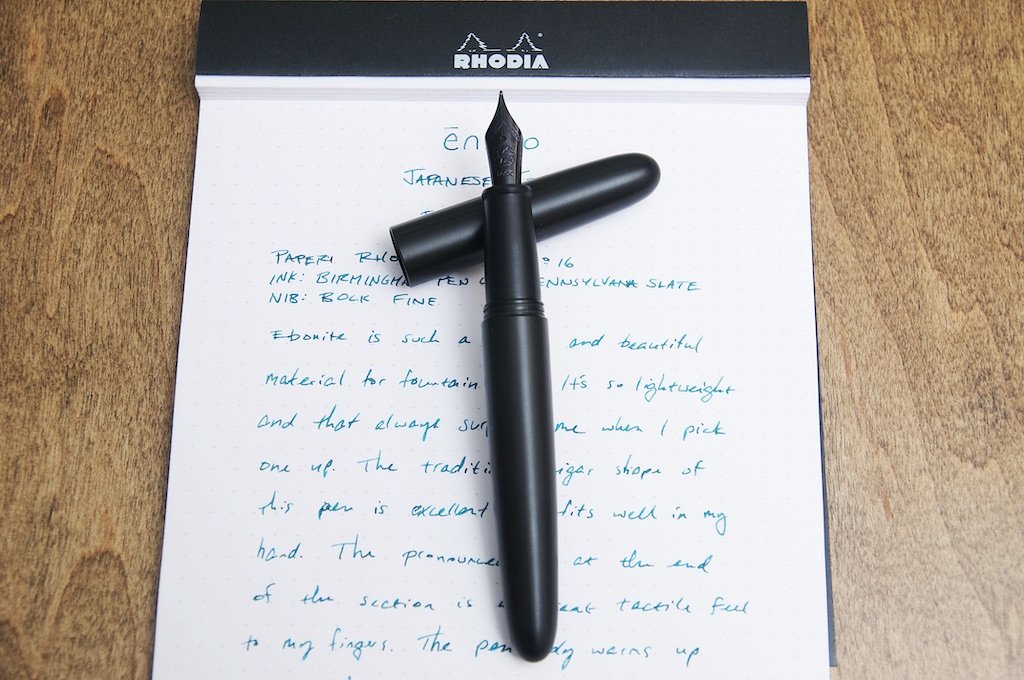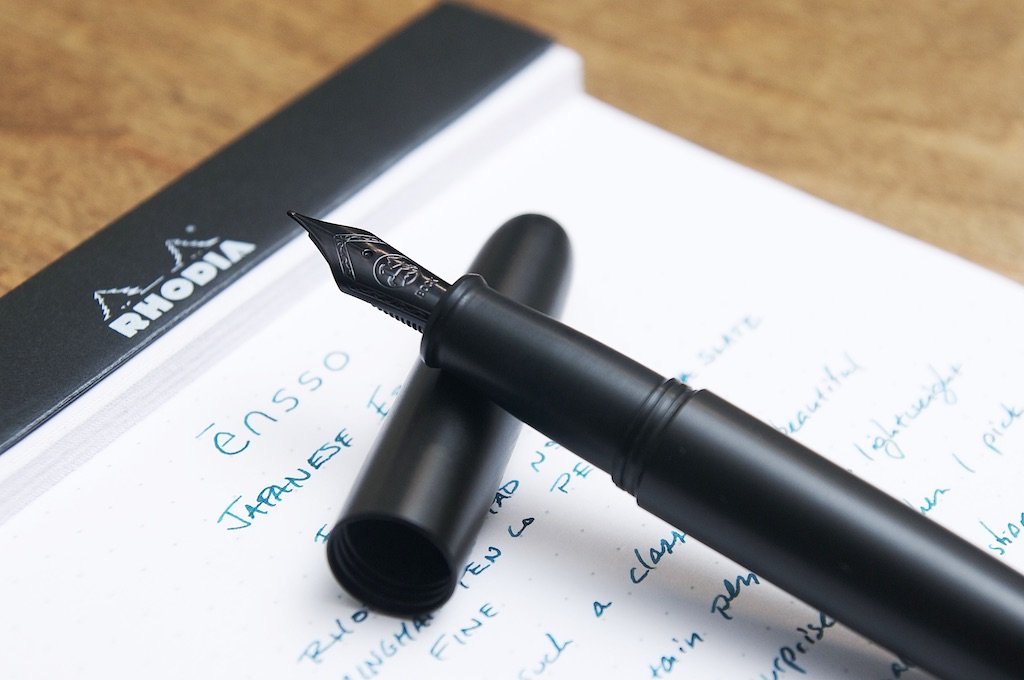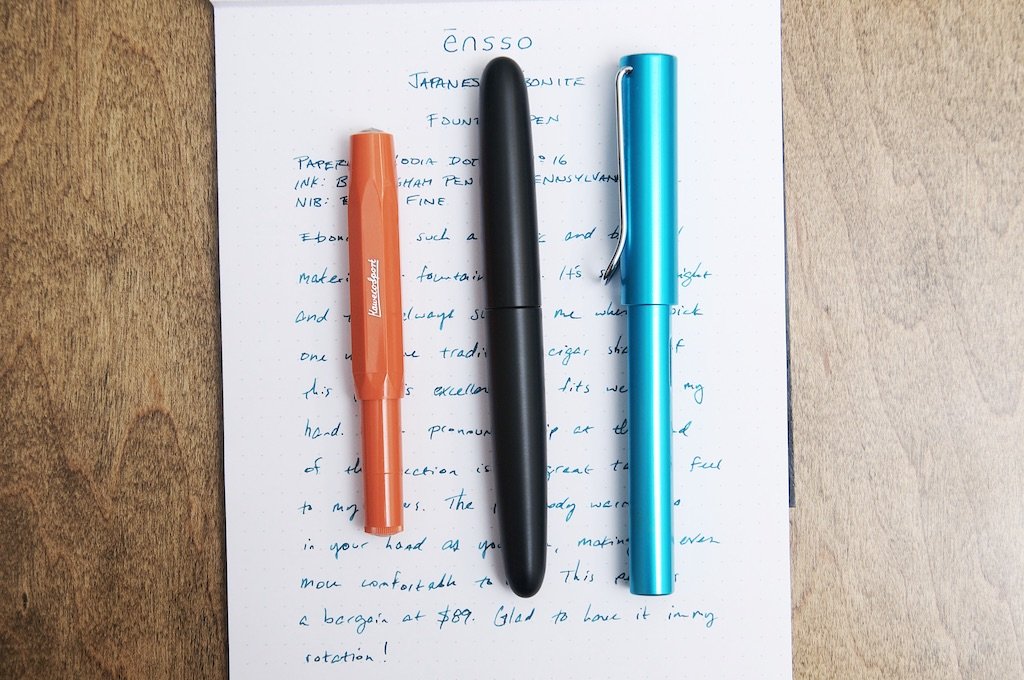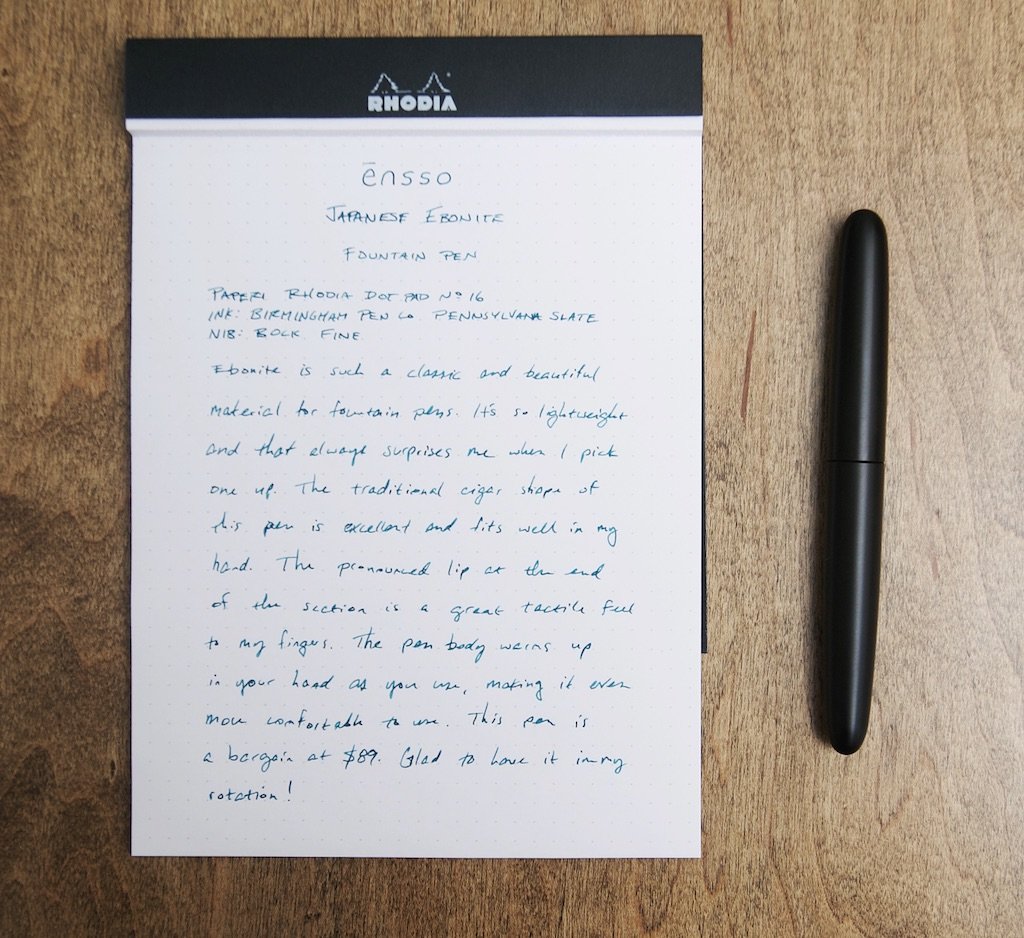(Kimberly (she/her) took the express train down the fountain pen/stationery rabbit hole and doesn't want to be rescued. She can be found on Instagram @allthehobbies because there really are many, many hobbies!.)
Hang around the fountain pen hobby long enough and inevitably someone will ask about finding an inexpensive flex fountain pen option. And the answers will usually range from “it doesn’t exist”, or “nothing beats vintage flex” (with no explanation as to which vintage pens/nibs have flex), or “you can try XYZ brand but it’s not very flexy” or “cram a Zebra or Nikko G nib into a cheap pen until it rusts and you throw it out the window”. Any of these sound familiar? As someone who kinda sorta knows how to use flex (taking intro to Spencerian and Copperplate courses means I’m an expert, right? I kid, I kid.), it can be a frustrating experience trying to find something that actually is flexy and not just bouncy at best.
Before I go any further though, here’s a quick explanation of “what is flex” (which is from my article on Stylosuite Flex Nibs - Flex is what you get when applying pressure to the tines of the nib. The separation gives a wider line than what you’d normally get when unflexed. Most nibs are not meant to be flexed but they may vary in how much “bounce” you might get when applying a little bit of pressure. Releasing that pressure allows the tines to go back together and write as normal. Apply too much pressure and your tines may never fully go back to their original position and your nib is now “sprung”. As they say, every nib is a flex nib … once. So, don’t ever press your luck too far with any nib, flex, dip or otherwise.
Dip nibs require the user to dip the nib into ink before writing a few letters/words before dipping it again. Some of the drawbacks include the tedium of constant dipping, potential messiness if you knock your bottle, or inconsistent ink flow in your writing if you dip too much/too little. Some of the vintage fountain pens have varying degrees of flexibility in their nibs (note that not all vintage pens have flex nibs) but it does require a bit of knowledge as to which makers and nibs were flexible. Modern fountain pens have had some success with bouncier/softer nibs which can give some line variation. An example is the 14kt gold Pilot FA nibbed pens like the 742/912 and 743/823 (size 10 being a bit softer/flexier than size 15), or the Pilot Falcon, which are pretty good options but they aren’t inexpensive (~$150 - $300). There are also steel nibs that are a cheaper option but usually don’t have very much flex - usually somewhere between slightly bouncy and semi-flex. This is where BlueDew comes in. BlueDew Pens is a Singaporean company founded with the goal of creating an affordable, portable option for folks who wanted to work on their calligraphy without the hassle of dip nibs or the mystery of vintage. Let’s see if it measures up.
The BlueDew Flex fountain pen ships in a padded envelope with a single pen case inside. I love that there are no additional boxes or packaging that I have to deal with. The case has a magnetic flap and the bottom of the case is nicely padded so you don’t have to clip the pen to the case. I like that the branding is subtle. The textured case has since been discontinued and replaced with a smooth material instead.
The BlueDew Flex fountain pen comes equipped with a flex nib unit already installed and a converter. The BlueDew converter is not the usual standard international converter that comes with many pens, but something different. It looks similar to the converter found on old Nemosine pens but the latter will work with the usual Jowo/Bock nib units as well as with the BlueDew nib unit, but the BlueDew converter does not work with other nib units. You can also use a standard international converter with the BlueDew nib unit. I was also able to partially install the nib unit into Bock-threaded pens but not Jowo. I confirmed this on their website, where it says “the threads should match Bock pens but the length might not match.” The nib and feed are friction-fit so you can also pull them to put into another housing if the BlueDew housing doesn’t fit your Bock-threaded pen. Be careful not to lose the little o-ring on the edge of the nib unit and also make sure that the cap has enough clearance because the BlueDew nib is a bit longer than a Bock 6 nib.
The converter is etched with “BlueDew Pens” so you don’t mix it up with your other converters.
Lining up the nib units at the collar (the top of the housing), you can see that the BlueDew nib on the right is just a wee bit longer than the Bock 6 - take note of that if you put the nib into another pen.
I was partially successful in putting the nib unit into a Namisu Ixion, but clearly it doesn’t fit all the way in there.
The nib itself is really where it’s at. It looks very much like a dip nib, so much so that I looked through the dip nib section of John Neal Books (which is an excellent calligraphy resource), and found something that was very similar. The Leonardt Principal EF nib has the same perpendicular “cuts” across the tines, the same B-shaped breather hole shape and similar cut on the sides of the nib. I don’t know if the BlueDew nibs were custom-made by the same maker or if they were used as a template for their nibs. Unfortunately, I don’t have any Leonardt nibs to compare the writing experience.
The Leonardt nib on the left (PC:John Neal Books) and the BlueDew flex nib on the right.
Speaking of writing experience, how does it write? For my initial inking, I used Waterman inks. Since I had two of them to play with, I used Waterman Inspired Blue in the Ancient Ice pen and Waterman Harmonious Green in the Emerald. Like most dip nibs, the BlueDew nib does not have any tipping, so you can get very fine lines with little pressure. This also means that the nib is pretty sharp so it can be easy to scratch the paper if you write too hard, resulting in more feathering because the ink travels through the fibers. Both of the pens wrote beautifully with the Waterman inks and didn’t have any problems with hard starts or railroading. When I used a drier ink like Robert Oster Avocado, I did get some hard starts and railroading, so be sure to use an ink with at least average flow, though you don’t need to use a super wet or lubricated ink to get good results. You do need to write somewhat slowly if you are going to use it like a flex pen, but it kept up nicely with regular speed cursive and printing.
Writing sample on Clairefontaine Triomphe 90gsm paper.
Up close, you can see the feathering.
This time on Rhodia with light pressure, medium pressure, regular cursive, print and all caps.
Generally pretty fountain pen-friendly, but this Strathmore paper couldn’t hold up to all that ink.
Over the course of four months, I reinked the Emerald pen three times and used it about 20 times to do a lot of flex writing. Pro tip: using a flex nib can help you use up ink quickly! I left the pen unused for 1-3 weeks at a time and didn’t have any problems with it starting right up. I also didn’t notice any degradation of the nib quality or ability to bounce back from being flexed. I asked several friends who use dip nibs how long it took for them to replace the nibs due to corrosion or getting worn down and they said anywhere from 1-4 weeks depending on usage. Considering I had the Emerald inked for about four months, I would say this is a huge improvement over using dip nibs!
Since inking up these pens, I traveled quite a bit and the Emerald one had leaked inside the barrel. Thankfully, it did not leak into the cap or onto the nib. On a few occasions, the pen didn’t write after being uncapped so I unscrewed the barrel to check the ink levels when I discovered there were drops of ink all over the converter and in the barrel. I did not have this problem with the Ancient Ice pen, which was inked up for two months and was taken on many of the same trips. I will probably try a different converter in the Emerald next time I ink it up.
The BlueDew Flex fountain pens sell for $88 USD which I think is a good price for an acrylic pen with flex nib unit and converter. Replacement nib units are available for $35 for a pair (nib units are not sold individually). The flex nib unit also fits in the BlueDew Writer fountain pen. Shipping from Singapore was $15 to the US.
Pro:
- Flex fountain pen that performs well and is affordable
- Pen case is a nice touch
- Replaceable flex nib units that have more longevity than usual dip nib
- Pen body has a nice feel - did not feel like a cheap pen
- Minimalist packaging (a pro for me)
Neutral:
- The non-standard converter might be difficult to find, as they are not sold on BlueDew’s website.
Not sure:
- Not sure if my leaky barrel experience is common or due to a faulty converter.
- The Leonardt dip nib costs $2.50 each versus $17.50 each for the BlueDew. However, that includes the feed and housing and you are likely to get several times more use from the BlueDew, so it might be closer in price than at first glance.
In summary, the BlueDew Flex is a really good flex nib fountain pen. You get the dip nib writing experience with none of the hassle of dipping and the portability of a regular fountain pen.
(Disclaimer: Thank you to BlueDew for providing both pens for review. Prior to receiving these, I had already bought the Emerald pen and two replacement nib units.)


